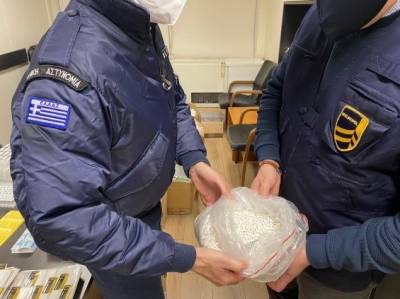Illegal drug production and trafficking is on the rise in Europe and with it, violence and potentially more drug use, according to a May 6 joint report by Europol and the European Monitoring Centre for Drugs and Drug Addiction (EMCDDA).
According to EMCDDA Director Alexis Goosdeel:
Our new analyses show that we are now facing a growing threat from a more diverse and dynamic drug market, that is driven by closer collaboration between European and international criminal organisations. This has resulted in record levels of drug availability, rising violence and corruption, and greater health problems,”
In recent years, law enforcement agencies have continually seized record amounts of cocaine arriving by sea to be sold in Europe and beyond. The 214. 6 tonnes of cocaine seized in 2020 represented a 6% increase from 2019, “suggesting a high availability of the drug.” Seizures in the Netherlands, Belgium, and Spain accounted for around three-quarters of the cocaine intercepted by law enforcement, but large quantities were also seized in Italy, France, Germany, and Portugal.
“Entry points of cocaine shipments are diversifying, with greater amounts seized in ports in Eastern Europe and Turkey,” the report also stated.
Though Colombia, Bolivia, and Peru are still the global hubs for cocaine production, European drug traffickers have also joined the production side of the drug trade. These new drug labs have been found mainly in Belgium, Spain, and the Netherlands,but also at the borders of the European Union.
While European drug trafficking still centers on cocaine, methamphetamine production is on the rise, with seizures of methamphetamine doubling since 2010.
“Historically production in Europe typically occurred in small, but widespread, ‘kitchen’ laboratories in Czechia and its neighbouring countries,” the study reports. “While these still exist, there is now growing concern about production facilities located in Belgium and the Netherlands, where methamphetamine can be produced on a considerably larger scale,”
Wastewater data have also revealed that the drug is also present in Belgium, Cyprus, the east of Germany, Spain, Turkey, and several northern European countries such as Denmark, Latvia, Lithuania, Finland, and Norway. Half of the 58 cities that track methamphetamines in wastewater reported an increase in the presence of the drug in 2020 and 2021.
As the market has expanded, so have corruption and violence, mainly due to competition among drug traffickers, particularly in Belgium, Spain, France, and the Netherlands, the countries with major ports of arrival for drugs.
“The expanding EU cocaine market has brought with it a rise in homicides, kidnappings and intimidation, with violence spilling over to those outside the drug market (e.g. lawyers, government officials, journalists),” the report explained.
The report also details several recent operations against drug trafficking rings. One of the largest operations—spanning multiple countries—targeted the ‘Ndrangheta or Calabrian mafia. The mafia organization started in the 19th century has supply chains in Italy, France, Belgium, Spain, and the Netherlands.
The report also highlights high levels of violence at the ports of Antwerp and Rotterdam. In Antwerp, there were 66 incidents with firearms or hand grenades between 2017 and 2020, all related to confrontations between the various Moroccan groups controlling the cocaine traffic in Belgium.
Other port cities such as Marseille and Le Havre have also suffered an increase in violence, according to the report.
In addition, the report points to an Irish clan, the Kinahan, and its war with rival groups. At least 20 people have been killed in Belgium, Ireland, the Netherlands, and Spain as a result of the rivalry between Irish drug traffickers. The Balkans, with networks of Albanian origin and their veritable arsenals of firearms, is another hot spot for organized crime in Europe.
The report warns that if the trend continues, particularly the increase in methamphetamine trafficking, it will “drive more corruption along the supply chain, creating a parallel economy.” Drug traffickers often rely on corrupting civil society to facilitate their trade. Increased availability of drugs will also result in greater drug use, triggering a cascade of social consequences.
“Fighting this illegal trade is a key priority for Europol and the EU. Today’s analysis supports us in understanding the market dynamics and is crucial for formulating effective law enforcement responses,” Europol’s Executive Director Catherine De Bolle also said.






